LAB REPORT
Science and Technology Making Headlines
Feb. 16, 2018

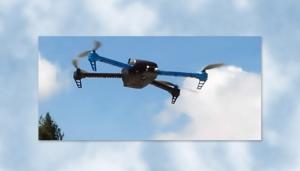
Lawrence Livermore researchers flew test campaigns with two commercial drones and developed an estimate of the energy needed to deliver a package in various scenarios. They also considered how battery technology and drone design will improve over time.
When it comes to package delivery, size matters
The idea of swarms of delivery drones dropping packages all over cities started out as a joke. There were even proposals to usie drones to drop off burritos at an eager customers' doorstep.
Lawrence Livermore scientists and colleagues decided to analyze this concept and modeled the energy efficiency of delivery drones, and compared it to classical fleets of delivery trucks. The answer: Depends on the size of the package.
“A drone would be a good option to deliver an iPhone or a pair of sunglasses. A bag of groceries or a computer monitor? Probably not,” said LLNL environmental scientists Joshua Stolaroff. “A larger drone may not be a win for the environment.”

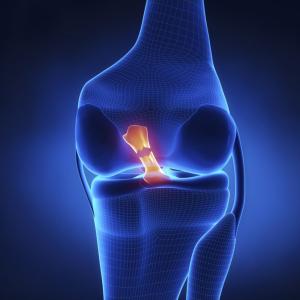
LLNL scientists have found that a protein found in the body limits cartilage degradation after a torn anterior cruciate ligament (ACL).
Torn ACL? Turn to your own body
There may be a protein in the body that hinders cartilage degradation in patients with a torn anterior cruciate ligament (ACL).
Lawrence Livermore scientists performed in vivo experiments on animal models of post traumatic osteoarthritis (PTOA) and found that sclerostin (a protein that in humans is encoded by the Sost gene), acts as a protective molecule immediately post joint injury to inhibit cartilage loss and joint calcification.
Patients with ACL ruptures are two times more likely to develop PTOA. Annually, there are 900,000 knee injuries in the U.S, which account for 12 percent of all osteoarthritis cases. PTOA leads to reduced physical activity, deconditioning of the musculoskeletal system, and in severe cases, requires joint replacement to restore function.

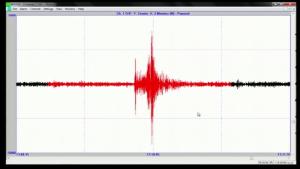
The Hayward fault in the East Bay is the most likely fault to rupture in the next 30 years.
Whole lotta shaking going on
In the next 30 years, scientists say there's a one-in-three chance of a 6.7 magnitude or higher earthquake on the Hayward Fault, impacting millions across the East Bay. Now, residents are getting a clearer picture of what that impact will look like, thanks to a team of seismologists and mathematicians at Lawrence Livermore.
"An earthquake like this happened in 1868, but only 3,000 people lived in the East Bay. Now, we've got 2.5 million," said LLNL geophysicist Arthur Rodgers. Along with the people came houses, freeways and water mains. "Our water and electricity and gas and our transportation corridors have to cross many major faults."
LLNL and Lawrence Berkeley National Laboratory scientists used some of the world’s most powerful supercomputers to model ground shaking for a magnitude 7.0 earthquake on the Hayward fault and show more realistic motions than ever before.

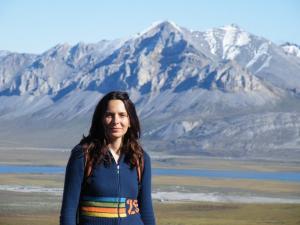
Lawrence Livermore climate scientist Ivana Cvijanovic conducted field work in the Alaska North Slope as part of her Ph.D research.
California could be hung out to dry
Lawrence Livermore’s increasingly powerful climate models have sounded a stark warning for California.
After LLNL climate scientist Ivana Cvijanovic began pushing a computerized climate simulation to its limits, she noticed a disturbing result: as Arctic sea ice nearly disappeared, massive high-pressure systems built up thousands of miles away, off the West Coast of the United States.
The atmospheric ridge blocked major storms bound for California, cutting off rainfall. Cvijanovic’s model shows that as the North Pole’s summer sea ice vanishes, as expected in the next few decades, it could turn down the tap for Central Valley farmers, Sierra Nevada ski resorts and cities throughout the nation’s most populous state.
The results also suggest that shrinking sea ice may have played a role in the extreme, costly drought that plagued California for most of this decade. That was driven by a “ridiculously resilient ridge” closely resembling the one that Cvijanovic’s simulation predicts.

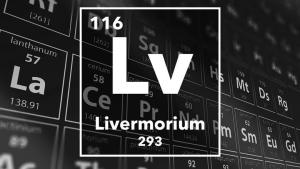
The International Union of Pure and Applied Chemistry (IUPAC) in 2012 officially approved livermorium as the new name for element 116.
Immortalized on the periodic table
Naming new elements is a complex process. There are strict rules, and discoverers often don’t get their first choice.
However, when it comes to naming livermorium after Lawrence Livermore and the city of Livermore, the right name can make a difference.
In 2012, scientists from LLNL, in collaboration with a team at the Joint Institute for Nuclear Research in Dubna, Russia, had just been confirmed as the discoverers of elements 114 and 116. The names chosen were flerovium and livermorium.
After the announcement, Livermore Mayor John Marchand was over the moon. “Being a chemist, having an element named after my city and then having the opportunity to go back to Moscow to the naming ceremony -- at the Central Science Club in Moscow -- was literally the high point of my career,” he said.





